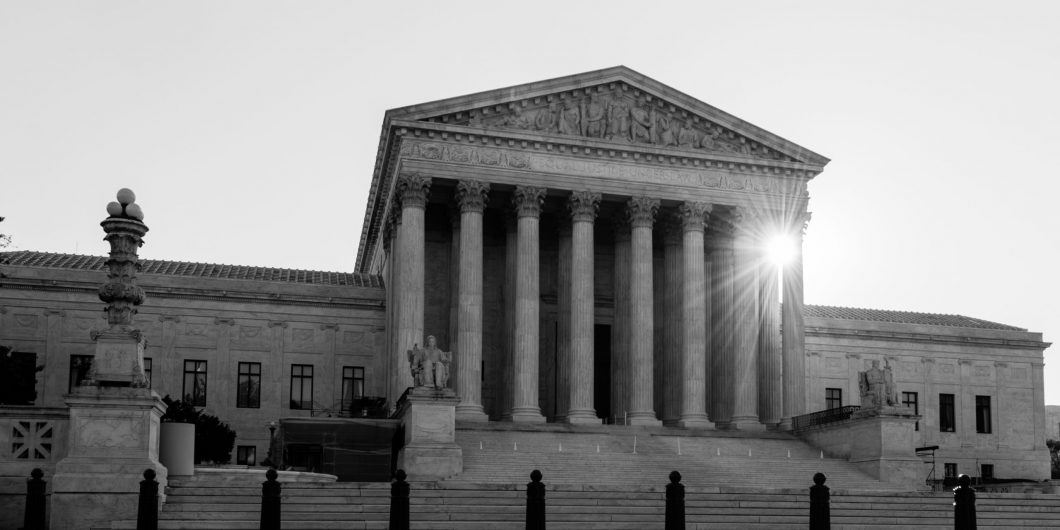The great success of originalism is that it offers an external constraint on judges that is more objective than any contemporary vision of justice.
Congress Has Never Given the Supreme Court a Free Ride
Congress has many ways to influence the U.S. Supreme Court other than impeachment, although the possibility of impeachment receives the lion-share of attention. Contrary to the belief that attempts to discipline the Court are few and far between, and largely ineffectual, evidence shows there have been numerous measures introduced in Congress to respond to contested actions by the Court. To be sure, the mere “introduction” of congressional court-curbing measures may seem like a paper tiger. Drawing on a century of data, however, Emory political scientist Tom Clark shows these congressional actions, channeling changes in public support for the Court, seem to influence the Court’s decisions. The Court shows itself less willing to strike down congressional legislation when there’s an increase merely in the introduction of Court-curbing bills in Congress. The rub is that the Court responds strategically to the introduction of these measures, tempering its behavior until it has improved its standing with legislators.
Impeachment, however, is not the only tool Congress has available to discipline justices (and other federal judges). Of the alternatives, one of the best known, due to President Roosevelt’s failed “court packing” plan, is changing the size of the Court.
Given the constitutional tenure of federal judges extends during “good behavior,” judges usually can serve as long as they wish. This can create tension between the judicial branch and the political branches when dramatic electoral changes occur in the latter. All national-level judges had been appointed by Presidents Washington and Adams during the first twelve years of the republic. When the bitterly fought election of 1800 swept Jefferson and the Jeffersonians into power, this placed the judicial branch at odds with the political branches of the national government. This was not merely a matter of Supreme Court decisions at variance with what Congress and the President wanted. At the time, judges felt free to be openly partisan, sometimes making vitriolic denunciations of Jefferson and the Jeffersonians from the bench. This is what got Justice Samuel Chase into trouble, and ultimately led to his impeachment in the House (although the Senate did not convict him).
This sudden change in the partisan composition of the national political branches also occurred in the 1930s when Democrats swept into power with dominating majorities. Until the “switch in time that saved nine,” the Supreme Court and the President were at loggerheads over the constitutionality of important features of the New Deal.
Roosevelt proposed to add a new justice to the Supreme Court for each justice over the age of 70. This was ostensibly to help with the Court’s workload. Important Democratic leaders in Congress balked at the proposal, and it went nowhere. Indeed, FDR never won a major domestic initiative after floating the Court-packing plan. (Not that the relationship is necessarily causal.)
Nonetheless, expanding the size of the Court (or federal judgeships more generally) is a straightforward means by which Congress and the President can immediately to change the location of the median justice on the Court. Further, it takes only a majority vote, as opposed to a supermajority in the Senate for conviction in an impeachment trial.
Beyond altering the number of justices on the Supreme Court as a Court-curbing technique, Congress can attempt legislatively to control the Court’s jurisdiction. More diffusely, Congress need not increase nominal judicial salaries so that they keep pace with inflation. They can also change retirement plans or delay filling lower court openings.
As Clark shows is his book, Congress need not adopt any of these measure to influence the Court. The Court appears to respond merely to the introduction of the measures. And, again, unlike impeachment, all of these measures can be constitutionally adopted with a majority vote.
None of this is to suggest when any of these measures should be used, or whether they should ever be used. The vast bulk of the work judges do is administration; answering mundane questions and controversies about the application of legislation and law. Nonetheless, in constitutional adjudication, particularly in Fourteenth Amendment jurisprudence, justice choices are often a matter of political choice. As Clark’s work shows, while Congress rarely adopts legislation disciplining the Court, myriad of bills have been proposed, and the Court strategically responds. Congress has never given the Court a free ride.


